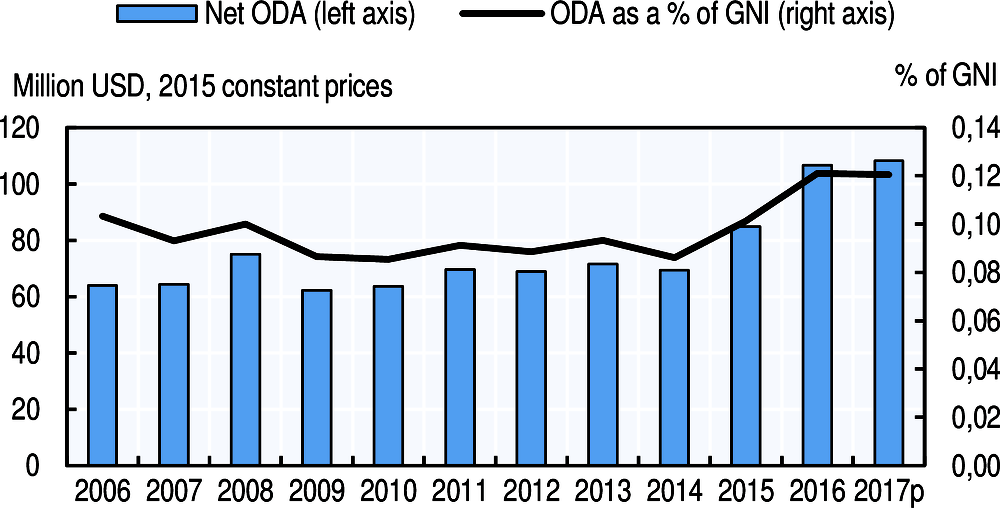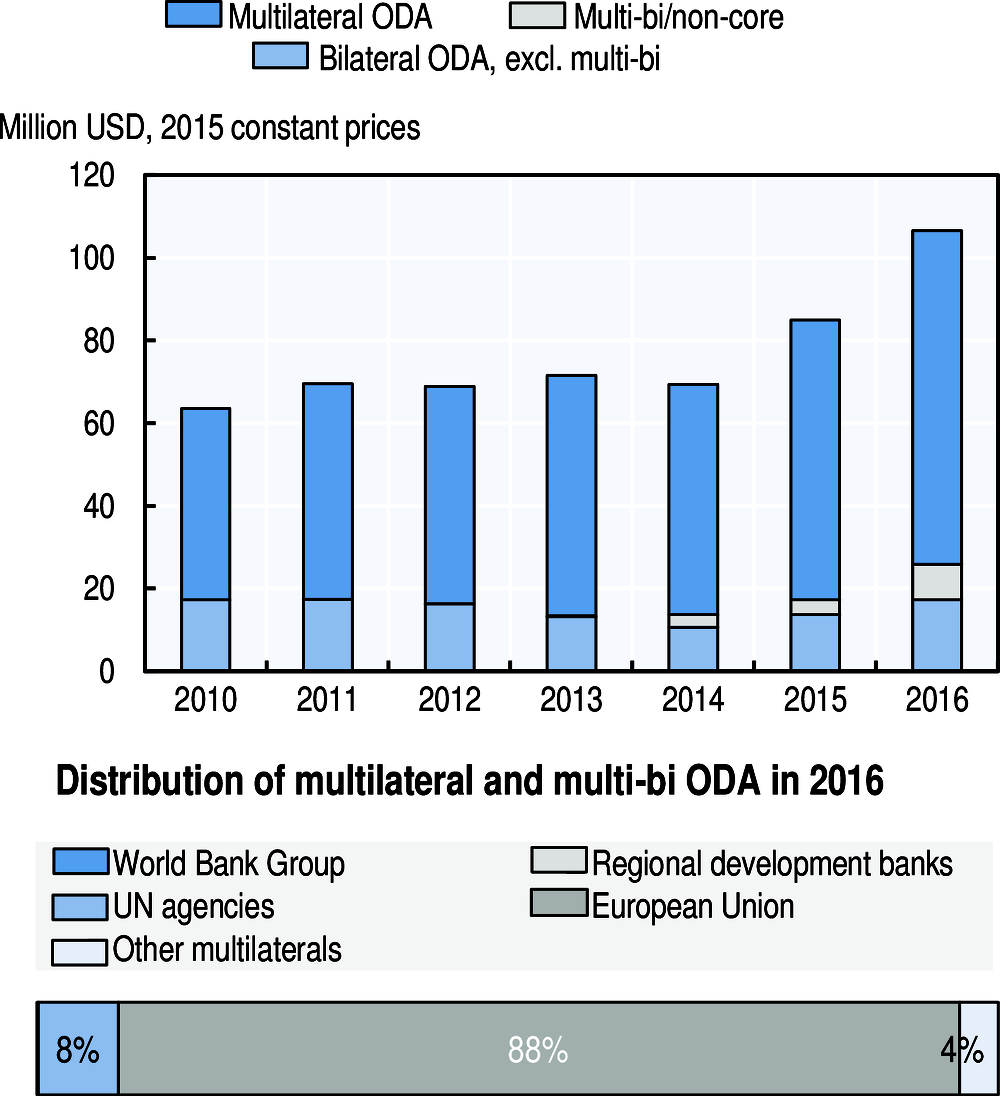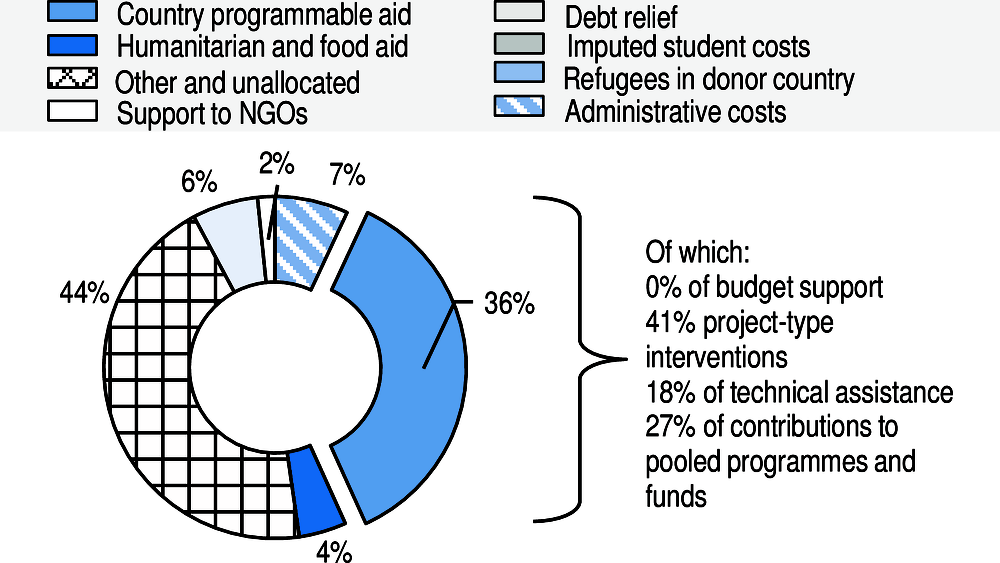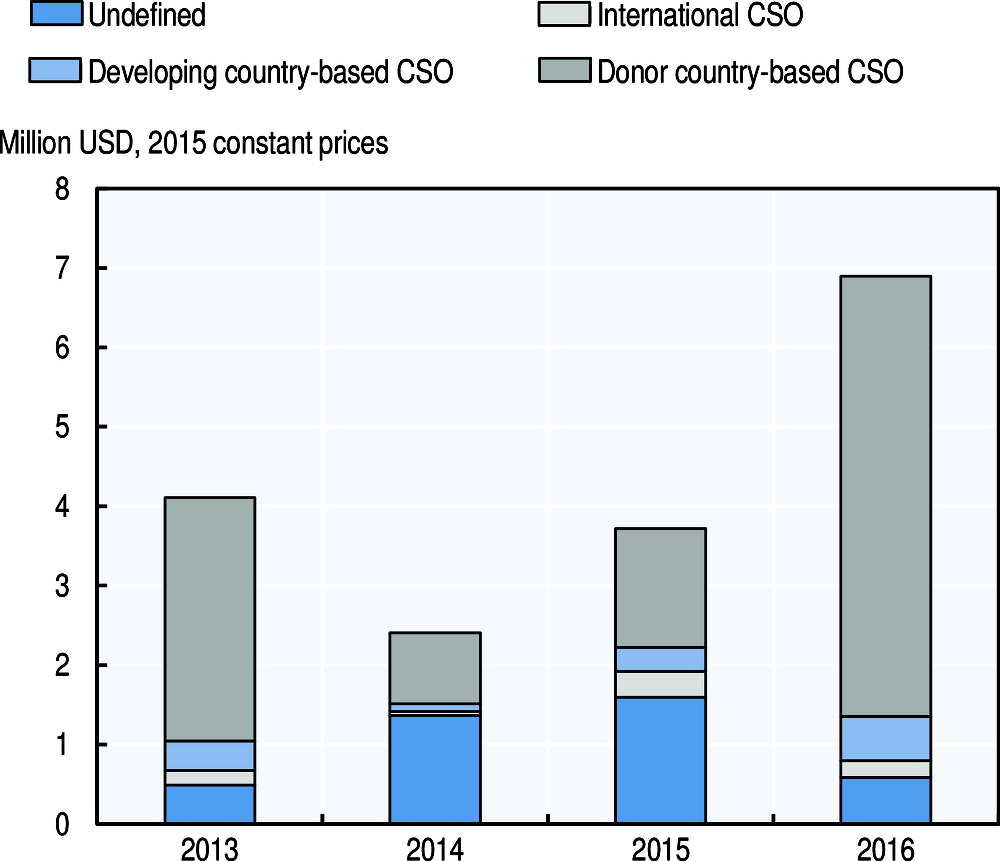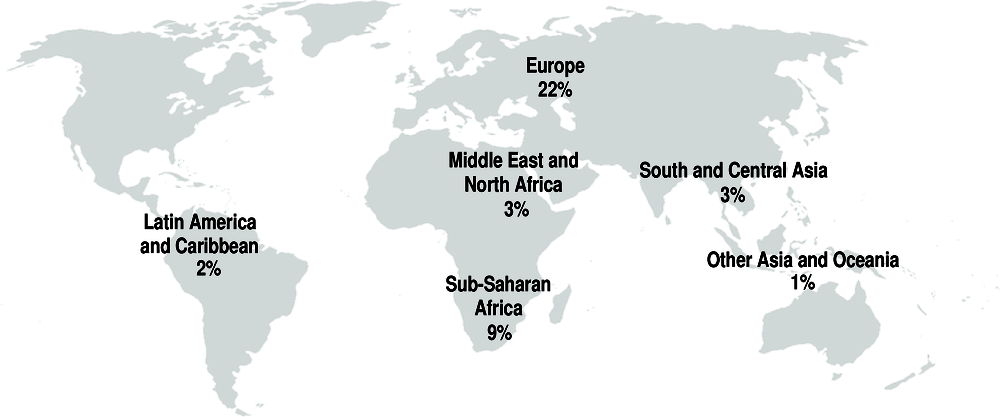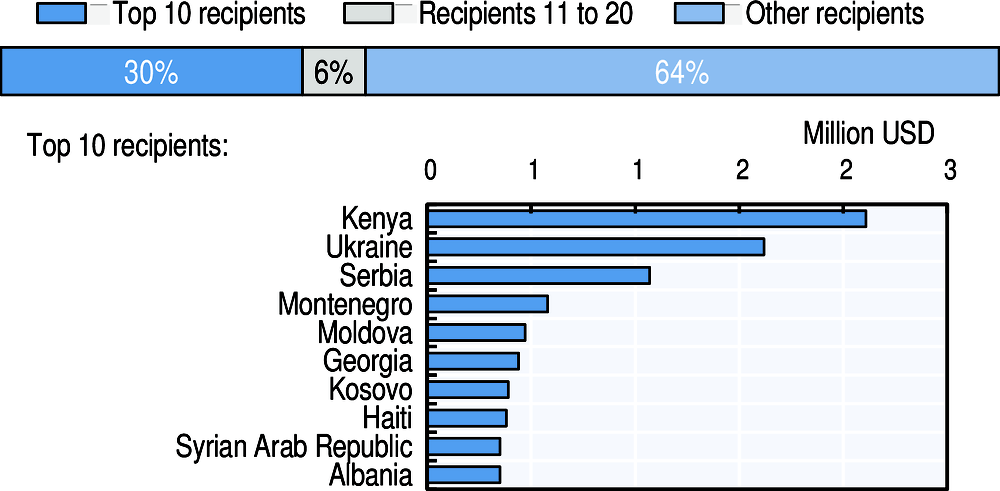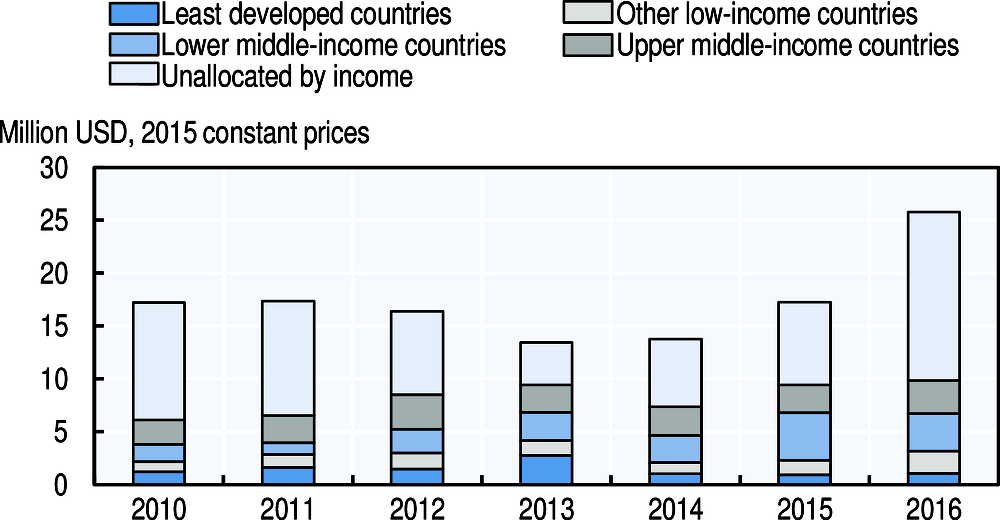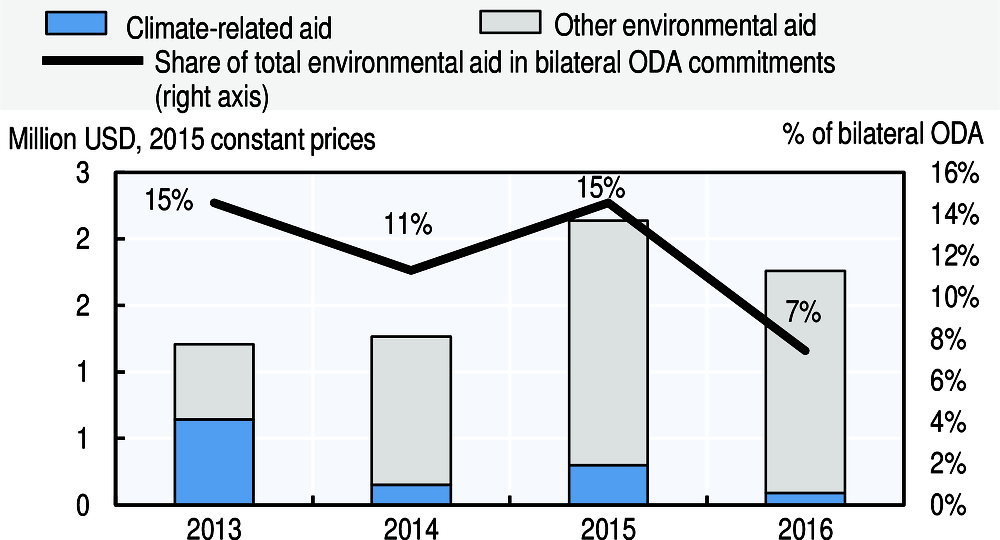Slovak Republic
Leaving no one behind: The Slovak Republic’s approach and priorities
The Slovak Republic’s development co-operation programme aims to contribute to sustainable development in partner countries, primarily by supporting education, employment, and democracy and good governance. The Slovak Republic promotes the creation of economic opportunities and employment as an effective instrument for fighting poverty and the causes of migration, reducing inequality, and strengthening developing countries’ economic and social resilience.
The Slovak Republic is preparing a new strategy for implementing the 2030 Agenda and plans to focus on six priority areas: 1) sustainable economic growth in the ageing population and changing global environment; 2) education as a life-long process, which should enable a life in dignity under rapidly changing circumstances and requirements; 3) good health; 4) sustainable settlements and countryside in the context of climate change; 5) elimination of poverty and social inclusion; and 6) rule of law, democracy and security emphasising the role of strong institutions and data-based governance.
Financial flows from the Slovak Republic to developing countries
At present, data on other official flows and private flows at market terms from the Slovak Republic to developing countries are not available. Data on private grants (funds raised by non-governmental organisations and foundations) are only available for 2016 (amounting to USD°0.1°million).
The Slovak Republic’s performance against commitments for effective development co-operation
The Slovak Republic’s official development assistance
In 2017, the Slovak Republic provided USD 113 million in net ODA (preliminary data), which represented 0.12% of gross national income (GNI) and a rise of 3.5 % in real terms from 2016, due to the overall scaling up of its aid programme. The Slovak Republic is committed to gradually meeting the official development assistance (ODA) target of 0.33% adopted at the EU level. Its ODA volumes are on a positive trajectory and an informal agreement is in place to increase the bilateral budget by 10% per year. In 2017, in-donor refugee costs were USD 1 million and represented 0.6% of total net ODA, compared to 1.5% in 2016.
Its share of untied ODA (excluding administrative costs and in-donor refugee costs) was 64.3% in 2016 (up from 47.5% in 2015); the Development Assistance Committee (DAC) average was 81.2%. The grant element of total ODA was 100% in 2016.
In 2016, 24.3% of the Slovak Republic’s ODA was provided bilaterally, while 75.7% of total ODA was allocated as core contributions to multilateral organisations. The majority of its multilateral aid went to fulfil its assessed contribution to the EU. In addition, it channelled 33.1% of its bilateral ODA to specific projects implemented by multilateral organisations (multi-bi/non-core contributions).
In 2016, 36.3% of bilateral ODA was programmed with partner countries. The Slovak Republic’s share of country programmable aid was lower than the DAC country average (46.8%) in 2016 and project-type interventions made up 41% of this aid. Forty-four per cent of bilateral ODA was classified as “other and unallocated”.
In 2016, USD 6.8 million of bilateral ODA was channelled to and through civil society organisations (CSOs). Slovak ODA to and through CSOs increased between 2015 and 2016 as a share of bilateral aid (from 21.6% to 26.6%).
Bilateral ODA was primarily focused on Eastern Europe. In 2016, USD 5.7 million was allocated to Eastern Europe and USD 2.4 million to sub-Saharan Africa.
In 2016, 30.2% of bilateral ODA went to the Slovak Republic’s top 10 recipients. Six of its priority countries (Albania, Georgia, Kenya, Kosovo, the Republic of Moldova and Ukraine) were among its top 10 recipients. In 2016, its support to fragile contexts reached USD 3.6 million (14% of gross bilateral ODA) and consisted mainly of project-type interventions (72%) and technical assistance (13%).
In 2016, 4% of bilateral ODA was allocated to least developed countries (LDCs), amounting to USD 1.1 million. This is a decrease from 5.4% in 2015 and is lower than the 2016 DAC average of 21.9%. Lower middle-income countries received the highest share of bilateral ODA in 2016 (13.7%), noting that 61.9% was unallocated by income group.
At 0.02% of GNI in 2016, total ODA to the LDCs was below the UN target of 0.15% of GNI.
In 2016, 39.1% of bilateral ODA (USD 10.6 million) was allocated to social infrastructure and services, with a strong focus on education (USD 4.4 million) and support to government and civil society (USD 4 million). Humanitarian aid amounted to USD 1 million. A high share (49.4%) of bilateral ODA was classified as “unallocated/unspecified”. The Slovak Republic committed USD 0.8 million (3.2% of bilateral allocable aid) to promote aid for trade and to improve developing countries’ trade performance and integration into the world economy in 2016.
USD 8 million of bilateral ODA supported gender equality. In 2016, 34.9% of Slovak bilateral allocable aid had gender equality and women’s empowerment as a principal or significant objective, compared with 0.6% in 2015 and the DAC country average of 36.5%.
USD 1.8 million supported the environment in 2016. In 2016, 7.4% of its bilateral allocable aid supported the environment and 0.4% (USD 0.1 million) focused specifically on climate change, compared with the respective DAC country averages of 33% and 25.7%.
Note to reader: Annex B provides “Methodological notes on the profiles of Development Assistance Committee members”.

